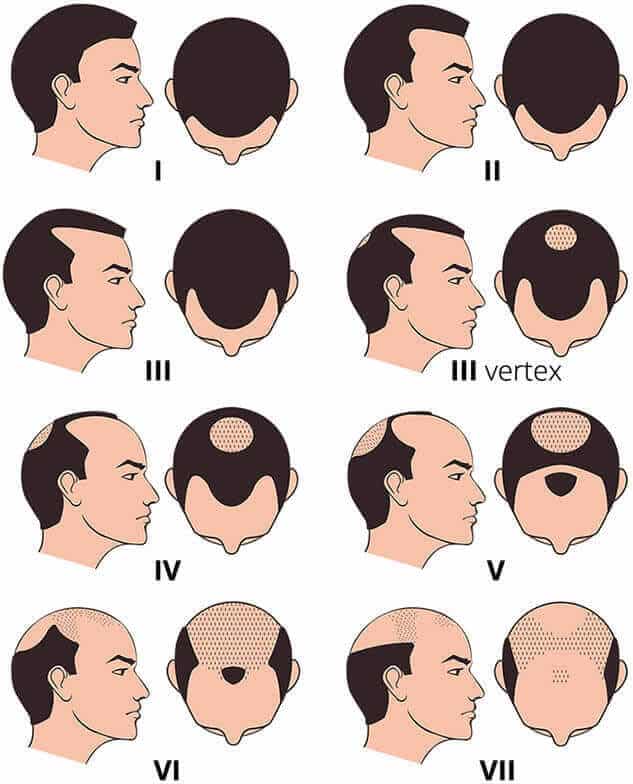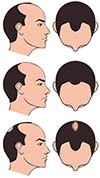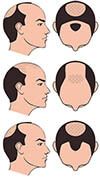Men’s Norwood Scale
Men’s Hair Loss
The Norwood Scale, sometimes referred to as the Norwood Hamilton Scale or the Norwood Scale of Male Pattern Hair Loss, measures the extent of hair-loss. Over the years, it has been adopted as the industry standard classification of genetic pattern hair loss. It is used to assess candidacy for hair transplant surgery and in the drafting of quotations.
Norwood’s Classification of Male Pattern Alopecia

Class 2 & 2A

The first “Classes” of hair-loss are represented on the left. Most men will become affected by either stage in their lifetime. In the top image, the hairline starts to recede and a “widow’s peak” above the temples is evident. In the second image, the hairline starts to recede farther back from the front and begins to “catch up” with the widow’s peak. Not evident in this picture, but to some of our clients, is that the hair on the back of the head is becoming thinner as the hair follicles become weaker and fall out.
Class 3, 3A, 3V

In Norwood Scale Class 3 (includes 3 Anterior, 3 Vertex) of this chart, men notice a more significant decline in the hair above the temples as well as receding from the forehead. Hair loss is also starting to become significant on the crown or vertex (bottom image). See our Before/After Hair Transplant Gallery to see an HRC patient with similar hair loss who was treated.
Class 4 & 4A

In class 4 and 4A (anterior), hair loss may become more noticeable on the crown, or patients may have only significant loss from above the temples and frontal anterior area (bottom photo). See our Before/After Hair Transplant Gallery to see an HRC patient with similar hair loss who was treated.
Class 5, 5A, 5V

By Class 5, 5A (anterior, middle), and 5V (vertex, bottom), hair loss is approaching significant levels, with most of it disappearing on the top of the vertex and crown. By these stages, more hair grafts will be needed to provide both coverage and density. See our Before/After Hair Transplant Gallery to see an HRC patient with similar hair loss who was treated.
